How to Grow a Tall and Lush Christmas Cactus: Expert Tips and Care Guide
The Christmas Cactus is a beloved houseplant, especially during the holiday season when its vibrant blooms bring cheer to any space. But beyond its festive appeal, this plant has a lot to offer year-round with its lush green foliage and ability to grow tall and full with the right care. Whether you’re a seasoned plant parent or new to indoor gardening, this guide will show you how to grow a tall and lush Christmas Cactus, ensuring it thrives for years to come.
Understanding the Christmas Cactus
The Christmas Cactus, scientifically known as Schlumbergera, is native to the coastal mountains of Brazil. Unlike the desert cacti we’re familiar with, this plant thrives in humid, tropical environments. It’s known for its segmented, flat leaves and vibrant flowers that typically bloom around Christmas time, hence the name.
Growth Cycle: The Christmas Cactus has a unique growth cycle. It typically blooms once a year, usually in late fall to early winter. After blooming, the plant enters a dormant period, which is crucial for its overall health and next year’s blooms.
Choosing the Right Environment for Your Christmas Cactus
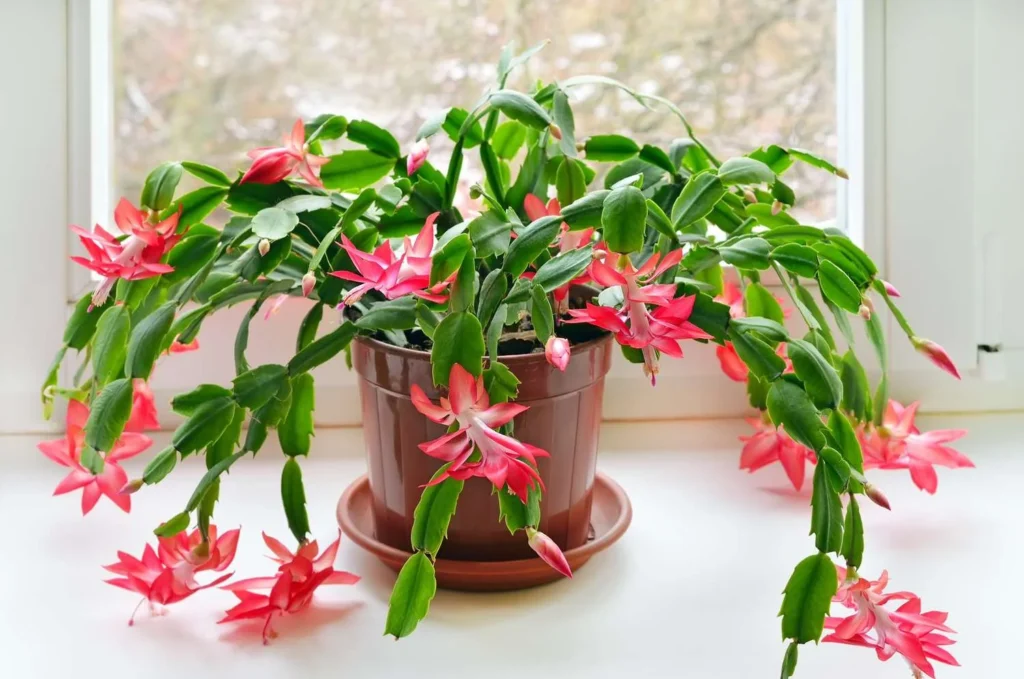
Light Requirements
Christmas Cacti thrive in bright, indirect light. Direct sunlight can cause the leaves to burn, leading to a stunted growth or unhealthy plant. Place your Christmas Cactus near a window with filtered light or in a spot that receives ample natural light without direct sun exposure.
Temperature and Humidity
This plant prefers a consistent temperature between 60-70°F (15-21°C). It can tolerate slightly cooler temperatures, especially during its dormancy period, but avoid placing it in drafts or near heat sources like radiators. High humidity is also beneficial, mimicking the plant’s natural tropical environment. If your home is dry, consider placing a humidity tray near the plant or using a room humidifier.
Potting and Soil Requirements
Choosing the right soil and pot is essential for a healthy Christmas Cactus. Use a well-draining soil mix, such as a blend specifically for cacti or succulents, which often includes sand or perlite to ensure proper drainage. A pot with drainage holes is also important to prevent water from accumulating at the bottom, which can lead to root rot.
Watering and Feeding Your Christmas Cactus
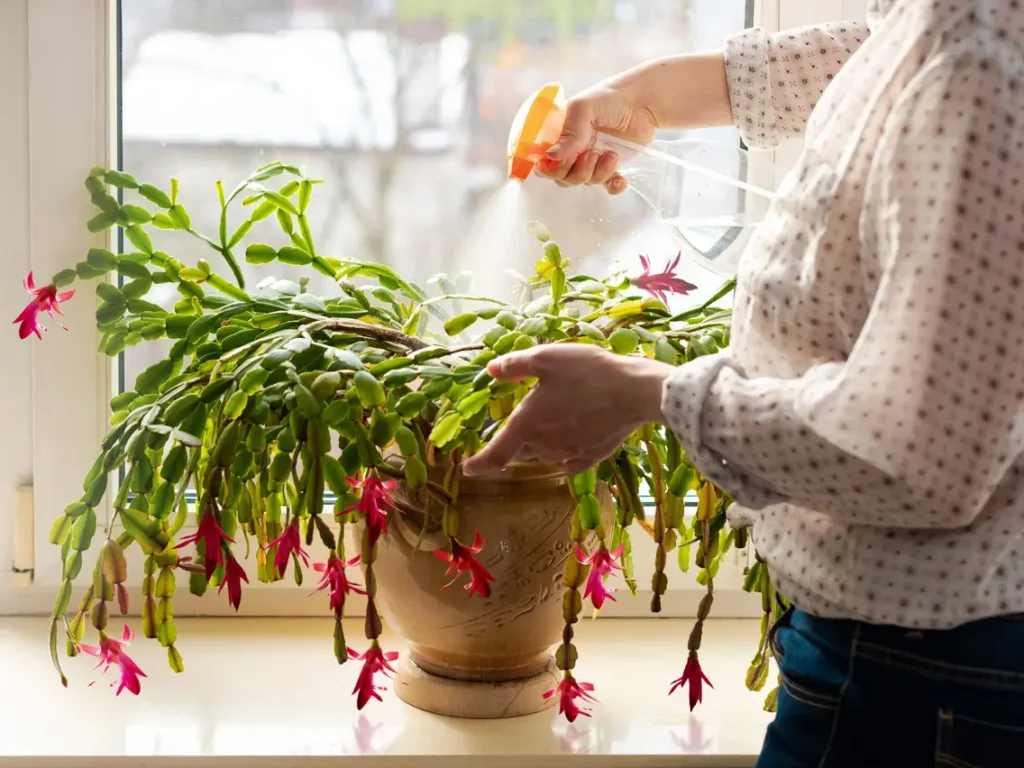
Watering Schedule
The key to watering a Christmas Cactus is to find the right balance. Over-watering can lead to root rot, while underwatering can cause the leaves to shrivel and the plant to struggle. Water your Christmas Cactus when the top inch of soil feels dry to the touch. During the growing season (spring and summer), water more frequently, but allow the soil to dry out slightly between watering. Reduce watering during the dormant period (fall and winter) to help the plant rest.
Fertilizing Tips
To encourage growth and blooming, feed your Christmas Cactus with a balanced, water-soluble fertilizer every two weeks during the growing season. A fertilizer with a higher phosphorus content can help boost flower production. During the dormant period, stop feeding the plant to allow it to rest.
Pruning and Re-potting for a Taller and Fuller Christmas Cactu
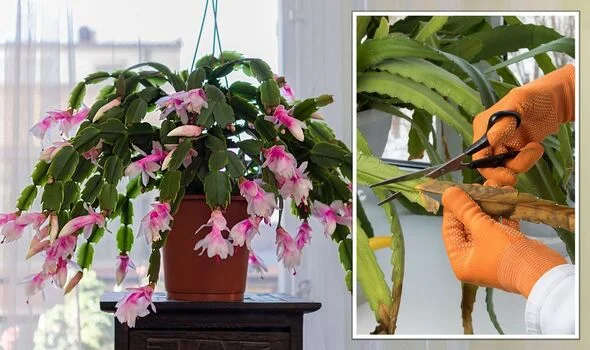
Pruning your Christmas Cactus not only helps maintain its shape but also encourages fuller, bushier growth. After the blooming period, use a pair of clean, sharp scissors or pruning shears to trim back any leggy or unruly segments. Focus on cutting just above the segment joints, as this is where new growth will emerge.
Re-potting Guidelines
Christmas Cacti don’t need frequent repotting, as they prefer to be slightly root-bound. However, if you notice the plant has outgrown its pot, with roots showing through the drainage holes, it’s time to repot. Choose a pot that’s one size larger and ensure it has good drainage. Repot in the spring after the blooming season, and handle the plant gently to avoid damaging its delicate roots.
Encouraging Blooming: How to Get Your Christmas Cactus to Flower
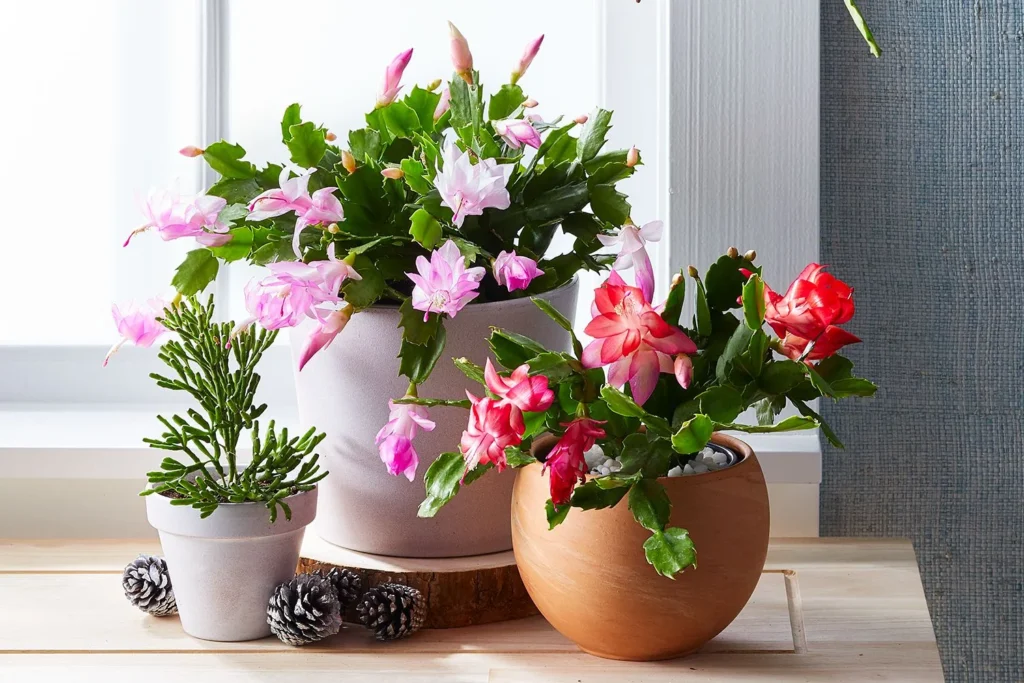
Dormancy Period
One of the most important aspects of getting your Christmas Cactus to bloom is respecting its dormancy period. After the blooming season, reduce watering and move the plant to a cooler location (around 50-55°F or 10-13°C) with less light. This rest period typically lasts for about 6-8 weeks and is crucial for the plant to recharge and produce flowers for the next season.
Light and Temperature Control
As the dormant period ends, gradually reintroduce the plant to warmer temperatures and brighter light. This transition helps signal the plant to start producing flower buds. Aim for about 12-14 hours of darkness each night during the bud formation period to mimic the natural conditions that trigger blooming.
Feeding for Flowers
Once you see buds forming, resume feeding with a phosphorus-rich fertilizer. This will give the plant the nutrients it needs to produce vibrant and abundant flowers.
Common Problems and How to Solve Them
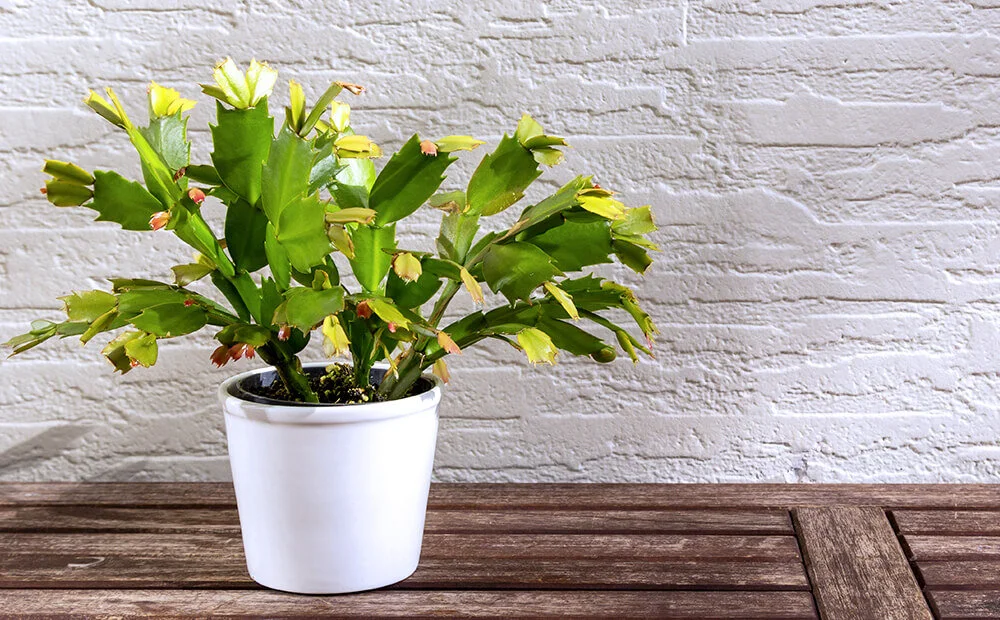
Even with the best care, your Christmas Cactus might encounter some issues. Here’s how to handle the most common problems:
Pest Control
Common pests like spider mites, mealybugs, and aphids can occasionally target your Christmas Cactus. If you notice any pests, treat the plant with insecticidal soap or neem oil. Be sure to check under the leaves and along the stems, where pests often hide.
Disease Prevention
Root rot is the most common disease affecting Christmas Cacti, typically caused by over-watering. Ensure your plant is in well-draining soil and never let it sit in water. If you suspect root rot, remove the plant from the soil, trim away any rotting roots, and repot it in fresh, dry soil.
Troubleshooting Growth Issues
- Wilting or Yellowing Leaves: This can indicate over-watering or poor drainage. Adjust your watering schedule and check that the pot has adequate drainage.
- Lack of Flowers: Ensure the plant has undergone its dormancy period and has been exposed to the right light and temperature conditions for blooming.
Tips for Growing a Tall and Lush Christmas Cactus
Consistent Care
The key to a tall and lush Christmas Cactus is consistency. Regular watering, feeding, and proper light will keep your plant healthy and thriving. Avoid sudden changes in environment, as this can stress the plant.
Seasonal Care Adjustments
Adjust your care routine with the seasons. Increase water and light during the growing season and reduce them during dormancy. This seasonal rhythm mimics the plant’s natural environment and encourages optimal growth.
Supporting Tall Growth
If your Christmas Cactus starts to grow tall, consider staking it for support. Use a small stake or trellis to help guide the growth and prevent the plant from drooping. Regular pruning will also help maintain its shape and encourage upward growth.
Propagating Your Christmas Cactus
Propagation Methods

Propagating a Christmas Cactus is a simple and rewarding process. The most common method is through cuttings.
Step-by-Step Guide
- Select Healthy Segments: Choose a healthy segment of the plant, preferably 2-3 segments long.
- Allow to Callous: Let the cutting sit in a dry place for 24-48 hours to allow the cut end to callous over. This prevents rot when planting.
- Plant the Cutting: Place the calloused end into a pot filled with well-draining soil. Water lightly and keep the soil slightly moist until you see new growth.
- Provide Indirect Light: Keep the new cutting in bright, indirect light. Once it starts to grow, you can treat it like a mature Christmas Cactus.
Frequently Asked Questions About Christmas Cactus Care
Why Isn’t My Christmas Cactus Blooming?
Ensure the plant has gone through its necessary dormancy period, and check that it’s receiving the right balance of light and darkness during bud formation.
How Often Should I Water My Christmas Cactus?
Water when the top inch of soil is dry during the growing season, and reduce watering during the dormant period.
What’s the Best Way to Prune My Christmas Cactus?
Prune after the blooming period, focusing on cutting above segment joints to encourage new growth.
Can I Grow a Christmas Cactus Outside?
In warmer climates, you can grow Christmas Cactus outdoors in a shaded area. However, in colder climates, it should be kept indoors to protect it from frost.
Final Thoughts
Growing a tall and lush Christmas Cactus is a rewarding experience that requires a bit of patience and care. By following the tips and guidelines outlined in this article, you can ensure your Christmas Cactus not only survives but thrives, bringing vibrant blooms and lush foliage to your home year after year. So, get started today, and soon you’ll have a Christmas Cactus that’s the envy of all your friends!
If you have any questions or tips of your own, feel free to share them in the comments below. Happy gardening!

